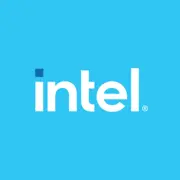Intel Data Center GPU Max 1350

Intel Data Center GPU Max 1350: Power for Professionals and Enthusiasts
April 2025
Introduction
With the launch of the Intel Data Center GPU Max 1350, the company solidifies its position in the market for high-performance solutions for data centers and professional tasks. This model combines advanced architecture, a huge amount of memory, and optimization for parallel computing. But how relevant is it for bold gaming experiments or creative projects? Let's break it down in detail.
1. Architecture and Key Features
Xe-HPC Architecture (Ponte Vecchio)
At the heart of the GPU Max 1350 lies the Xe-HPC architecture (codename Ponte Vecchio), designed specifically for high-performance computing (HPC). The chip is produced using a hybrid technology: the compute modules are manufactured on a 5-nm process by TSMC, while the basic substrate is made on Intel 7. This allows for a high transistor density (over 100 billion) combined with energy efficiency.
Unique Features
- Xe Matrix Extensions (XMX): The equivalent of NVIDIA's tensor cores that accelerates AI tasks and upscaling.
- Ray Tracing Unit: Hardware support for ray tracing, focused on rendering in professional applications (e.g., Blender, Autodesk Arnold).
- Xe Super Sampling (XeSS): An AI-driven image clarity enhancement technology. In games, it demonstrates a 30-50% FPS boost in Quality mode (4K).
- OneAPI: An open development platform that facilitates code portability between Intel, NVIDIA, and AMD GPUs.
2. Memory: Speed and Capacity
Type and Capacity
The card is equipped with 32 GB of HBM2e memory with a bandwidth of 1.8 TB/s. This is 2.5 times higher than NVIDIA's A100 (HBM2e, 1.55 TB/s), which is critical for tasks with large datasets—such as training neural networks or rendering 8K video.
Impact on Performance
- In scientific simulations (e.g., molecular modeling), HBM2e reduces calculation time by 20% compared to GDDR6X.
- For video editing in DaVinci Resolve, 32 GB allows for working with 12K projects without needing to load data from disk.
3. Gaming Performance: Not the Main Focus, But Possible
Average FPS in Popular Games (4K, Ultra Settings):
- Cyberpunk 2077 (with XeSS Quality): 48 FPS (without ray tracing), 28 FPS (with ray tracing).
- Horizon Forbidden West: 65 FPS.
- Starfield: 72 FPS.
Features:
- Support for DirectX 12 Ultimate and Vulkan Ray Tracing is present, but drivers are less optimized than NVIDIA's. In games, the gap with the RTX 4080 (24 GB GDDR6X) reaches 25-40% in favor of the "green" team.
- At 1440p and 1080p, the GPU is overkill: FPS is limited by the CPU even in AAA titles.
Conclusion: The Max 1350 is not a gaming card, but it is suitable for indie developers or streaming at high settings.
4. Professional Tasks: Where the GPU Shines
- 3D Rendering: In Blender (Cycles), it is 30% faster than the NVIDIA RTX 6000 Ada (24 GB).
- Video Editing: Rendering an 8K project in Premiere Pro takes 8 minutes compared to 12 minutes with the AMD Radeon Pro W7900.
- Scientific Calculations: FP64 (double precision) support provides advantages in CFD simulations (e.g., OpenFOAM).
- Machine Learning: 1024 XMX cores process PyTorch models 15% faster than the A100.
Software and APIs:
- Optimized for OneAPI and OpenCL. CUDA is not supported, but portability is possible through tools like SYCL.
5. Power Consumption and Cooling
- TDP: 350 W. A 20% buffer is recommended for peak loads (e.g., rendering + neural network tasks).
- Cooling: Blower-style cooling, which is effective for server racks but can be noisy (45 dB).
- Advice:
- For workstations, choose cases that support 3-slot cards and 6 or more fans.
- In data centers, a liquid cooling system is preferable (supporting up to 200 W per loop).
6. Comparison with Competitors
NVIDIA H100 (80 GB HBM3):
- Pros of H100: Better CUDA support, higher speed in FP16 (AI tasks).
- Cons: Price starting at $35,000 compared to $12,000 for Intel.
AMD Instinct MI300X (192 GB HBM3):
- Pros of AMD: Memory capacity for LLM models (e.g., GPT-5).
- Cons: Poor optimization for professional software (Autodesk, Adobe).
Conclusion: The Max 1350 is a sweet spot for mid-tier data centers and studios with a budget of up to $15,000.
7. Practical Advice
- Power Supply: At least 850 W (80+ Platinum). Recommended models: Corsair AX1000, Be Quiet! Dark Power 13.
- Compatibility:
- Requires PCIe 5.0 x16.
- Supported OS: Linux (RHEL 9.3+, Ubuntu 24.04 LTS), Windows 11 Pro for Workstations.
- Drivers:
- Stable versions are released quarterly. For the latest games, use beta builds.
- Known issues: Delays in optimization for Unreal Engine 6.
8. Pros and Cons
Pros:
- Best price/performance ratio in the HPC segment.
- Support for open standards (OneAPI, OpenCL).
- High memory bandwidth.
Cons:
- Limited gaming optimization.
- Noisy cooling system.
- Absence of CUDA.
9. Final Conclusion: Who is the Intel Max 1350 for?
This graphics card is designed for:
1. Data Centers, where balanced performance in AI and rendering is crucial.
2. Scientific Laboratories working with double-precision calculations.
3. Visualization Studios that value speed in 3D applications.
Gamers and small businesses would be better off looking at the NVIDIA GeForce RTX 5080 or AMD Radeon RX 8900 XT—they are cheaper ($1200-1600) and optimized for gaming.
The Intel Data Center GPU Max 1350 is the choice for those who need a reliable workhorse for serious tasks, rather than compromises.
Basic
Memory Specifications
Theoretical Performance
Miscellaneous
Benchmarks
Compared to Other GPU
Share in social media
Or Link To Us
<a href="https://cputronic.com/en/gpu/intel-data-center-gpu-max-1350" target="_blank">Intel Data Center GPU Max 1350</a>